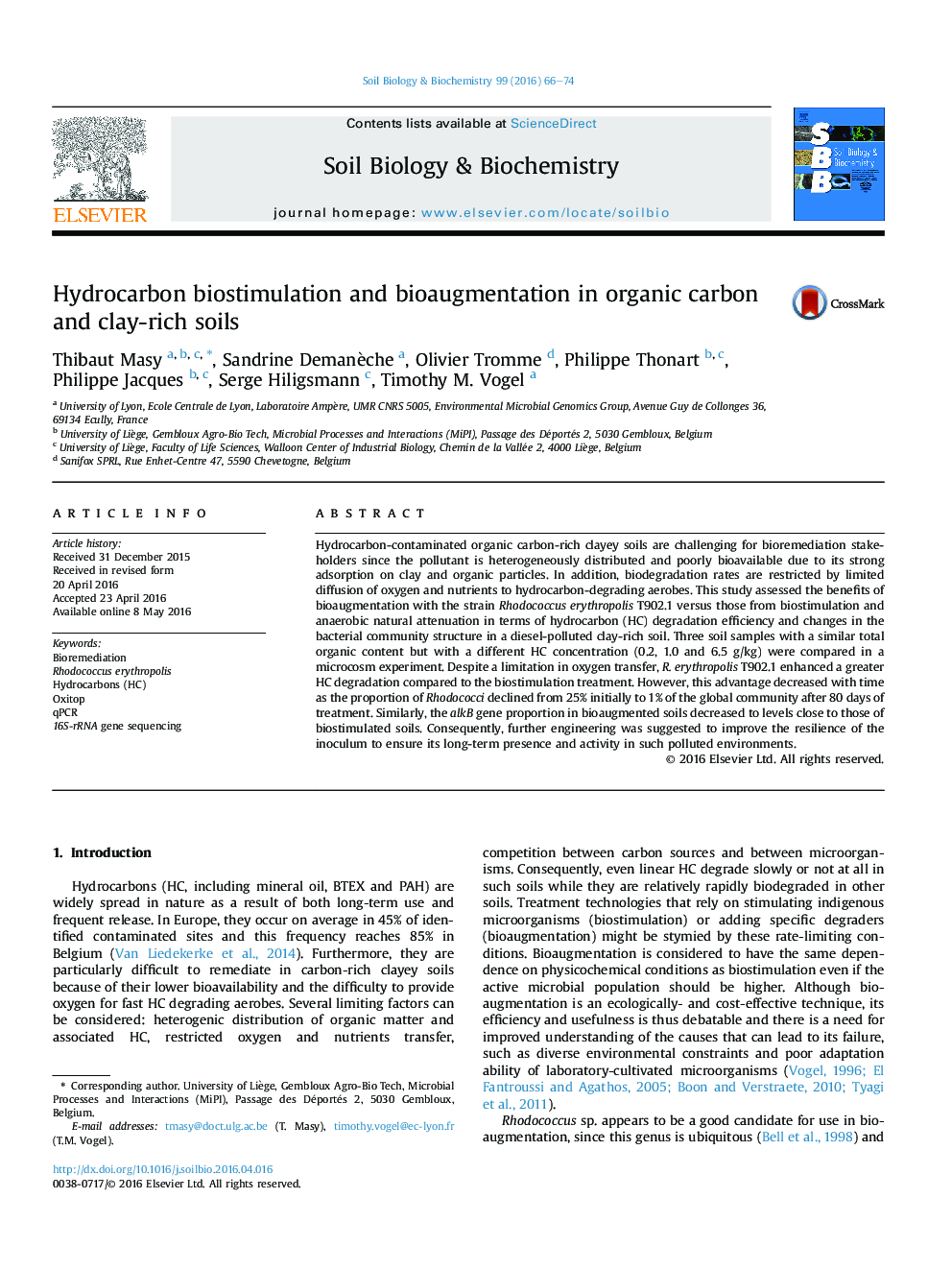| Article ID | Journal | Published Year | Pages | File Type |
|---|---|---|---|---|
| 2024298 | Soil Biology and Biochemistry | 2016 | 9 Pages |
•Carbon-rich diesel-polluted soils were evaluated for bioremediation potentiality.•3 pollutant/organic matter ratios and 3 bioremediation strategies were compared.•Rhodococcus erythropolis T902.1 enhanced the degradation compared to biostimulation•Too heterogenic hydrocarbon distribution prevents an efficient biodegradation.
Hydrocarbon-contaminated organic carbon-rich clayey soils are challenging for bioremediation stakeholders since the pollutant is heterogeneously distributed and poorly bioavailable due to its strong adsorption on clay and organic particles. In addition, biodegradation rates are restricted by limited diffusion of oxygen and nutrients to hydrocarbon-degrading aerobes. This study assessed the benefits of bioaugmentation with the strain Rhodococcus erythropolis T902.1 versus those from biostimulation and anaerobic natural attenuation in terms of hydrocarbon (HC) degradation efficiency and changes in the bacterial community structure in a diesel-polluted clay-rich soil. Three soil samples with a similar total organic content but with a different HC concentration (0.2, 1.0 and 6.5 g/kg) were compared in a microcosm experiment. Despite a limitation in oxygen transfer, R. erythropolis T902.1 enhanced a greater HC degradation compared to the biostimulation treatment. However, this advantage decreased with time as the proportion of Rhodococci declined from 25% initially to 1% of the global community after 80 days of treatment. Similarly, the alkB gene proportion in bioaugmented soils decreased to levels close to those of biostimulated soils. Consequently, further engineering was suggested to improve the resilience of the inoculum to ensure its long-term presence and activity in such polluted environments.
